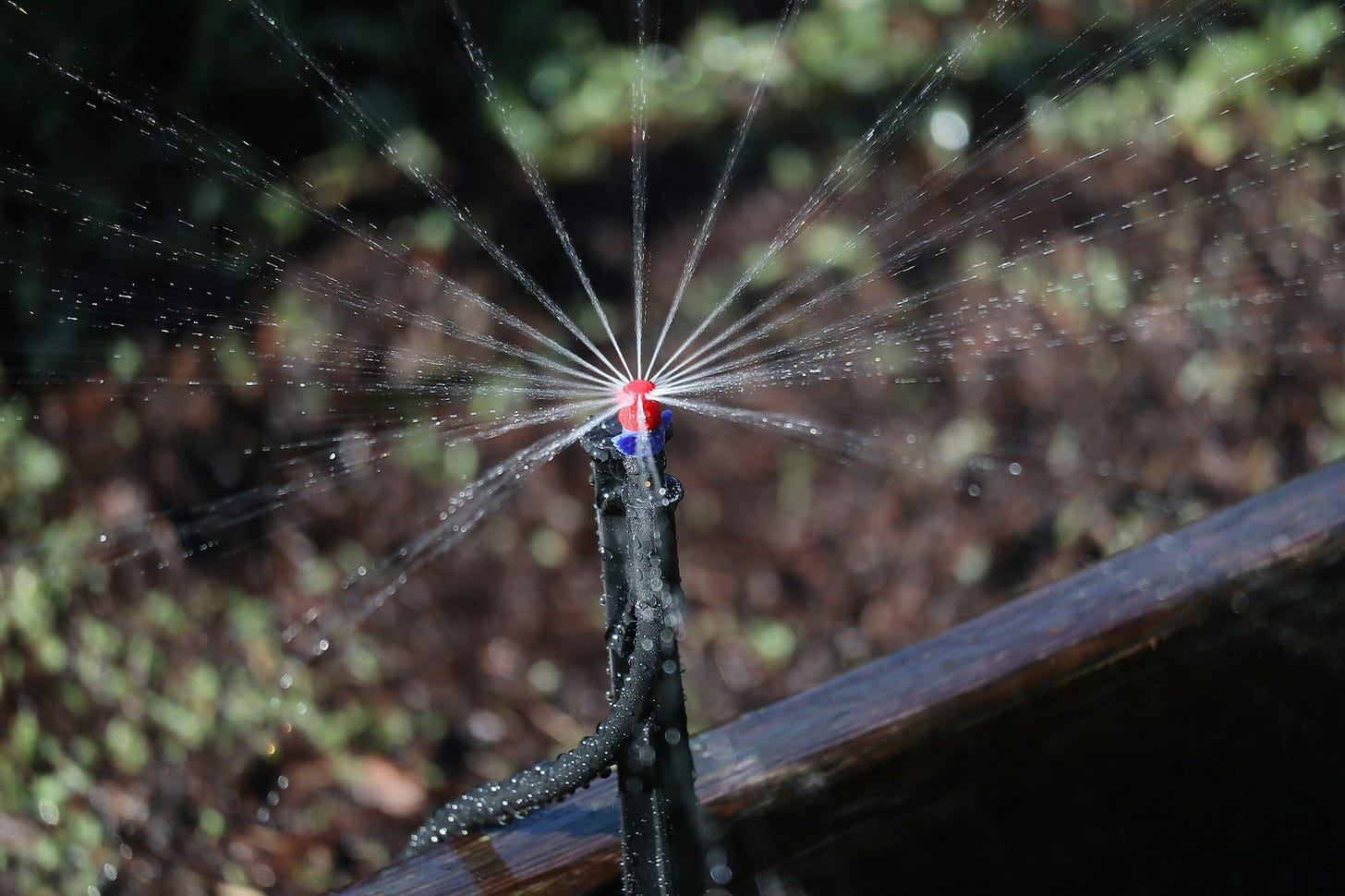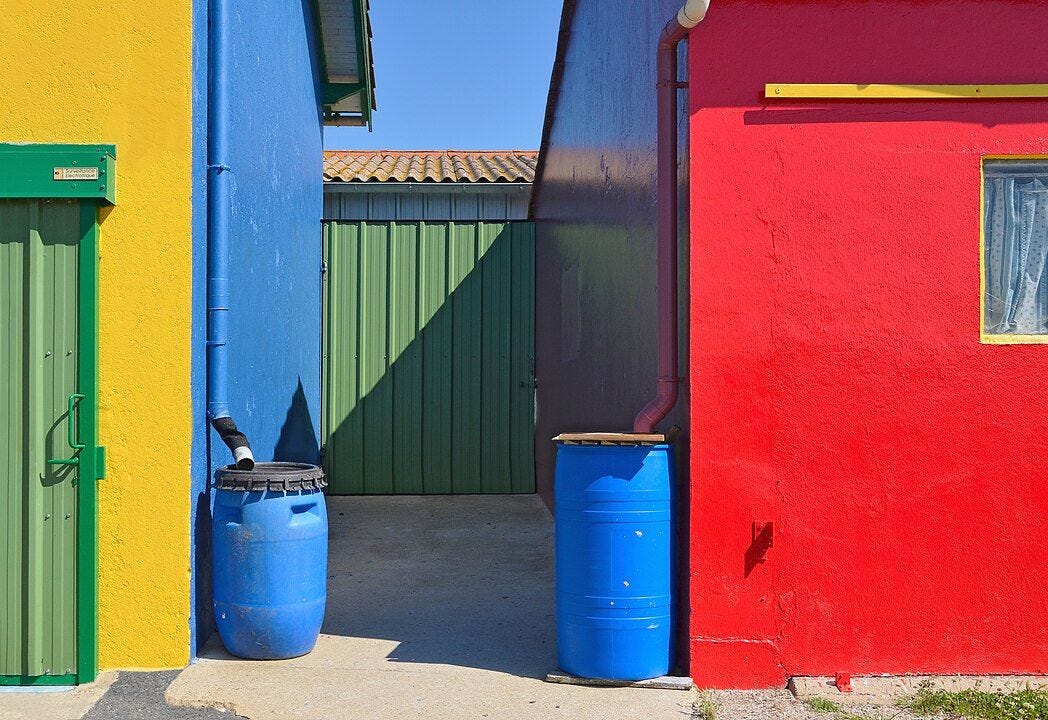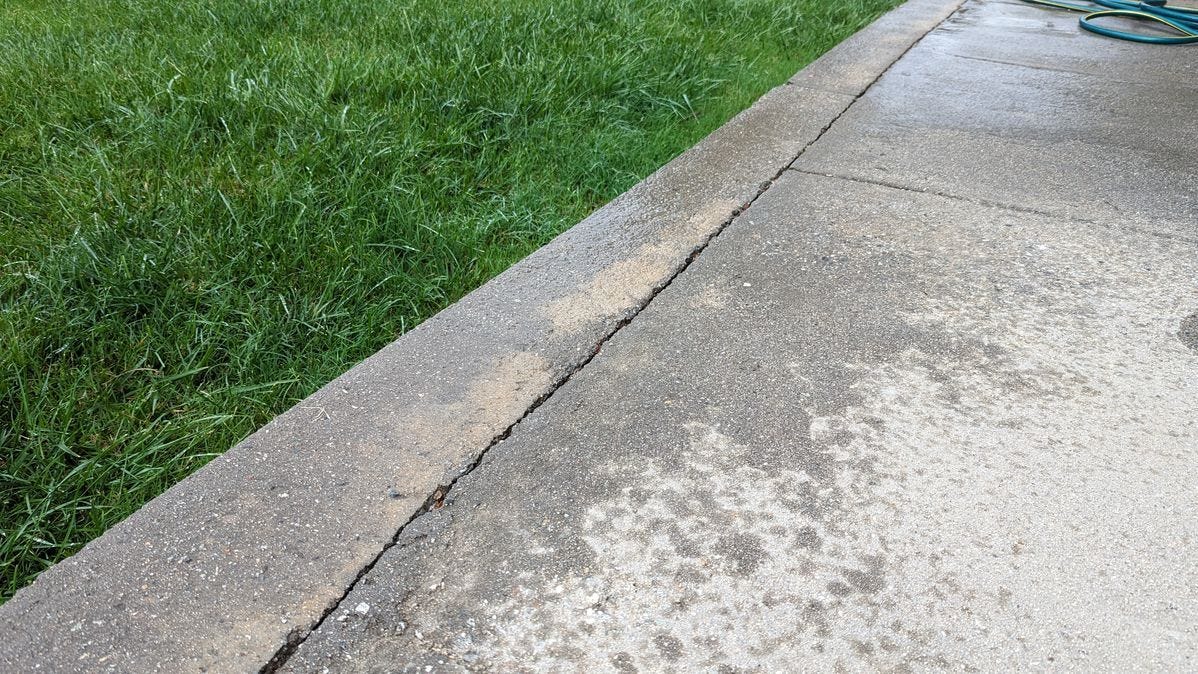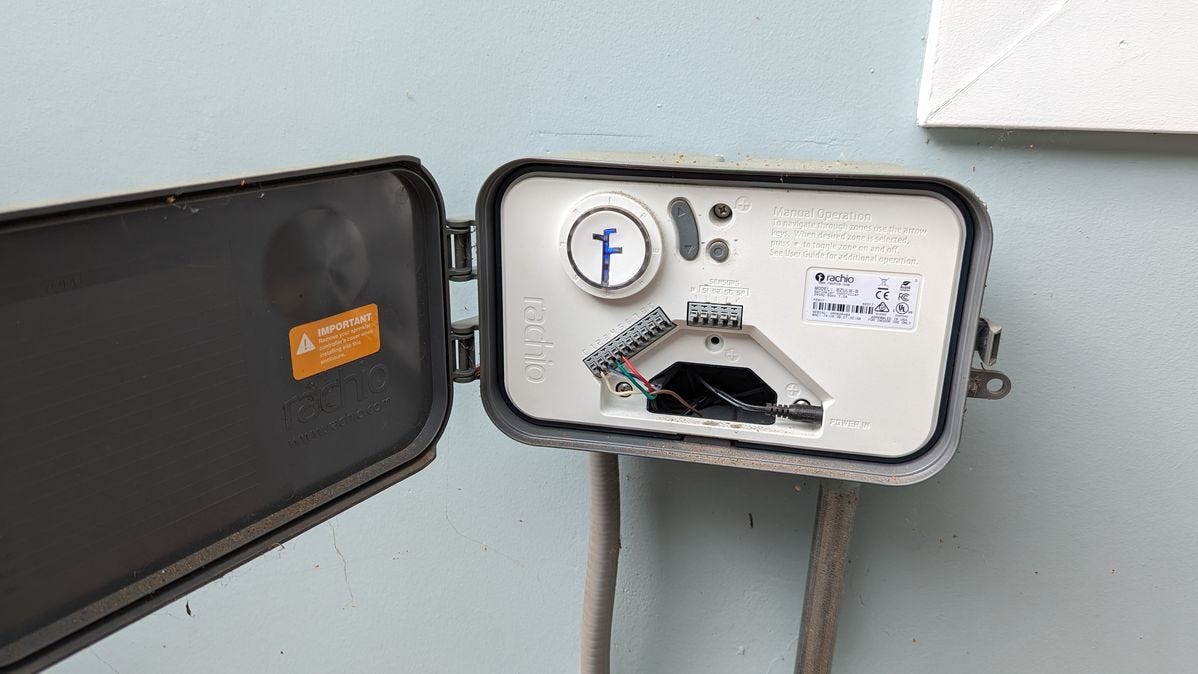Water Conservation for your Garden
Tips to make your garden more water-wise.

Water is a precious resource. Water is a finite resource. It makes sense that we should conserve our water and use it as efficiently as possible. For most people, the water supply for our homes is not free, but water from the sky is free for us to collect. Our gardens need water for the plants to grow so it makes sense to try and keep as much rainwater in our gardens as possible. We should also try to be more efficient with the water we use so that public water supplies are not strained.
The recent mega-drought in the Southwestern USA lasted 23 years and saw many periods where homeowners had restrictions on how much water could be used for garden irrigation. Even in the UK, known for its wet climate, outright bans on garden irrigation have been a common occurrence in recent years.
How can home gardeners be more efficient with water use? In today's post, we will outline several ways to do this.
Climate-Friendly Landscaping
Assessing your landscape and making sure you are using plants that are "climate-friendly" is the best way to be efficient with water use. "Climate-friendly" plants are those that can generally survive on rainwater alone and only require supplemental irrigation to get established or when seasonal rainfall is below average.
Native Landscaping
The simplest way to create a climate-friendly landscape is to use plants that are native to your area. Be careful though as many plants labeled as native may not be native to the specific climate you have in your home garden. For example, in California, there has been a lot of enthusiasm for using California Native Plants in the garden but California covers a wide area that includes temperate rain forests, alpine land, mild coastal areas, hot inland valleys, and deserts. Picking out plants for a San Diego garden because they are native to California may not result in a climate-friendly plant palette. San Diego gardeners should pick out plants native to San Diego. Plant selection should also factor in site conditions, e.g. do not use riparian plants unless your garden is sited next to a stream or river. When planning a native garden, consult with local resources for suitable plants such as native plant nurseries, local garden designers, native plant societies, or online resources like Calscape which gives you a list of plants native to your postal code.
Non-native but Climate-Friendly
In addition to native plants, you can expand your options by using plants that are native to areas with a similar climate. For instance, most of California's coastal regions have a Mediterranean climate, so plants that are native to the Mediterranean region can also be used in coastal California. South Africa, Chile, and parts of Australia also have a similar climate, further expanding your options. Similarly, it is common to see plants that are native to New Zealand in Northern European gardens due to both regions having a temperate climate.
Review your Landscape Use
The third factor in planning a climate-friendly landscape is to reassess how you are planning to use your outdoor space. Turf grass is the best natural surface for active use areas that will receive a lot of foot traffic so if you have kids or pets that will play rough in your garden, grass may still be appropriate even though it is not climate-friendly. On the flip side, if you have a lawn in your front garden that is purely ornamental, consider using a climate-friendly lawn alternative or redesign the area so it does not need to be filled in with a low ground cover.
Rainwater Harvesting
Many homes are designed to drain rainwater off your property as quickly as possible to prevent erosion or damage to your foundation. I used to live in a hillside home in Los Angeles that had all our rain gutters and patio drains connected to a system of pipes that would travel underground the slope to discharge in the roadside, where it would travel downhill to the city's storm drain system that sent the water into the Pacific ocean. Of course, this is a huge waste of water and these days, newer homes in the city are built to retain a significant portion of that water onsite.
The methods of rainwater retention are known as "Stormwater BMPs", where BMP stands for Best Management Practices. Older homes can incorporate some of these Stormwater BMPs. Here are some of the methods that homeowners can install themselves:
Rain Barrels
Rain Barrels (also known as rain butts) can be installed to capture water from your roof gutter's drainpipes. In drought-prone areas, many cities will offer rebates for installing these or even give them away for free to residents.
It should be noted here that you generally cannot capture all the rainfall, so you should have the rain barrel installed so that it can divert the extra water back into your drainpipe so that it can be safely discharged away from your home's foundation.
A 1,000 ft2 roof will receive 623 gallons of rainwater from 1" of rain. Rain barrels are typically sized at less than 100 gallons. If you want to capture more rainwater you'll need to invest in a larger water storage solution.
Rainwater cisterns are also available for residential use and can contain up to 2,500 gallons but you'll need a lot of space to place these on your property.
Rain Gardens
Another method of conserving water is to stop it from leaving your property too quickly so that you can absorb more of it into the ground. Rain Gardens are an excellent way to do this.
A Rain Garden is a depression in the ground that creates seasonal ponds when there is heavy rain. These should be installed at a point where stormwater naturally travels.
Rain Gardens are either filled with rocks to prevent excess ponding (useful if mosquitoes are prevalent in your area) or planted with plants that can handle seasonal flooding. Plants that are naturally found near creeks that dry up in summer are a good choice of plants for a rain garden.
f you have heavy clay soil in your garden, the soil inside the rain garden should be replaced with well-draining soil as further prevention against excess ponding.
Swales
Swales are a channel that directs the flow of stormwater. In this context, swales can be used to absorb more of the rainwater in the ground by building them using similar materials to a rain garden. Swales can also be used to direct water to the Rain Garden and are a great way to capture some of the overflow water from a rain barrel. As with a Rain Garden, Swales can become an attractive feature in your garden as well as a utility.
Berms
If you have a sloping garden where rain gardens or swales are not feasible, building berms with soil can slow down water and divert it horizontally across your landscape to help absorb more water into your garden's soil. As with swales, the aim here is to slow water down as it travels across your landscape to reduce run-off into the street so that you can store as much of it in your soil as possible.
Efficient Irrigation
If you have long periods of dry weather, supplemental irrigation is often a necessity. Even if you are gardening only with native plants, a drier-than-normal season can take a toll on your landscape, so you should ensure that your irrigation is implemented as efficiently as possible.
Drip irrigation
Drip Irrigation is a much more efficient method of watering plants than using sprinklers. Drip irrigation has an efficiency of 90%, compared to sprinklers which are only 65% efficient at getting water to plants. Sprinklers lose a lot of water to evaporation, overspray, and run-off. Even the best-designed sprinkler system will lose a lot of water to the environment on a windy day. Drip irrigation applies water directly to the soil and does it very slowly so that you can prevent saturating the ground and having excess water running off and out of your planting areas. New planting areas should ways use drip irrigation as a first choice, and adapters can be used to convert an existing sprinkler system to drip.
Drip irrigation can be used in all parts of your garden. Driplines that can be placed under the soil are now available for use in irrigating lawns.
Sprinkler Efficiency Improvements
Despite their inefficiency, sprinklers are still useful for irrigating existing lawn areas. To minimize water loss, a few measures can be taken.
Adjust your schedule to water the lawn at night, as this will prevent evaporation. Avoid watering at dawn or dusk as this is often the windiest time of day.
Avoid running your sprinklers for a long time, as lawns usually have compacted soil that is not fast draining. Instead of running your sprinklers for 15 minutes, set up a schedule where the sprinklers run for 5-minute intervals with at least a 20-minute break in between. This will reduce the amount of run-off, which is the excess water that runs off your lawn. You can check for the best intervals by testing your sprinklers during the day.
Check for Over-Spray. Sprinklers can be adjusted to make sure their spray is pointed in the right direction. Sometimes, the mechanism that allows for this adjustment can loosen and cause the sprinklers to change the direction of their spray. This is a simple adjustment that can be made by hand.
Make sure your water pressure is not too high. If the pressure is too high, then the water will spray out more like a vapour than a spray, which is easily carried away by breezes. Depending on your setup - you may need to make adjustments to your sprinkler heads and/or the sprinkler valve to achieve optimal pressure. If the pressure from your home water supply is very high, then you may need to install a pressure regulator before the valve. This is the most difficult of the 3 adjustments you can make, so you may want to hire an irrigation specialist or a plumber to help with this.
Smart Timers
Smart irrigation timers are now available that can connect to your home Wi-Fi and adjust your irrigation schedules based on weather data. I am a big fan of the Rachio timers. Smart timers can also calculate soil moisture to determine when exactly your plants need watering so that your irrigation is as efficient as possible. Although these are more expensive than conventional timers, many water suppliers offer rebates to customers who purchase them.
Waterwise Gardening
The way we manage our gardens is an important factor in our outdoor water use.
Try to limit planting to the early Spring, or Winter if you live in a frost-free area. Plants require much less water to get established in Winter or Spring than in the warmer Summer months.
Make sure your planting areas have a sufficient layer of compost and mulch covering the soil. You should always have at least a 3" (8cm) deep layer of mulch to prevent evaporation and the compost will hold moisture for longer, while also keeping the ground temperatures lower which will prevent your plants from getting too thirsty.
If you do not have an irrigation system and rely on hand-watering, water deeply and less frequently. This will encourage your plants to develop a deep root system so that they can tap into groundwater or store more water in their trunk when they are mature. If you water frequently, the plants may only develop a shallow root system and will also be more susceptible to root rot. Deep root systems are the reason why some plants are able to naturally withstand long periods of drought.






